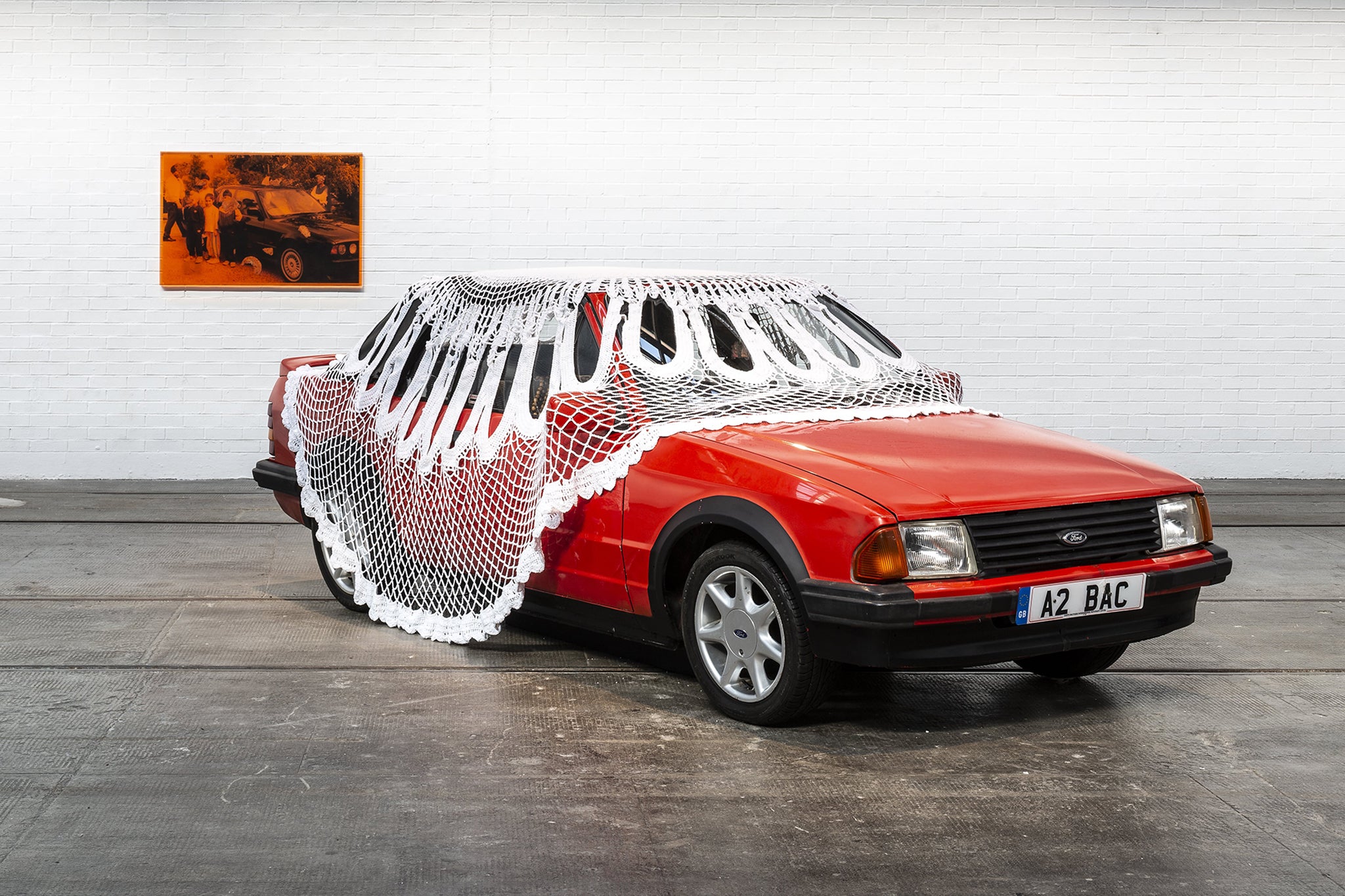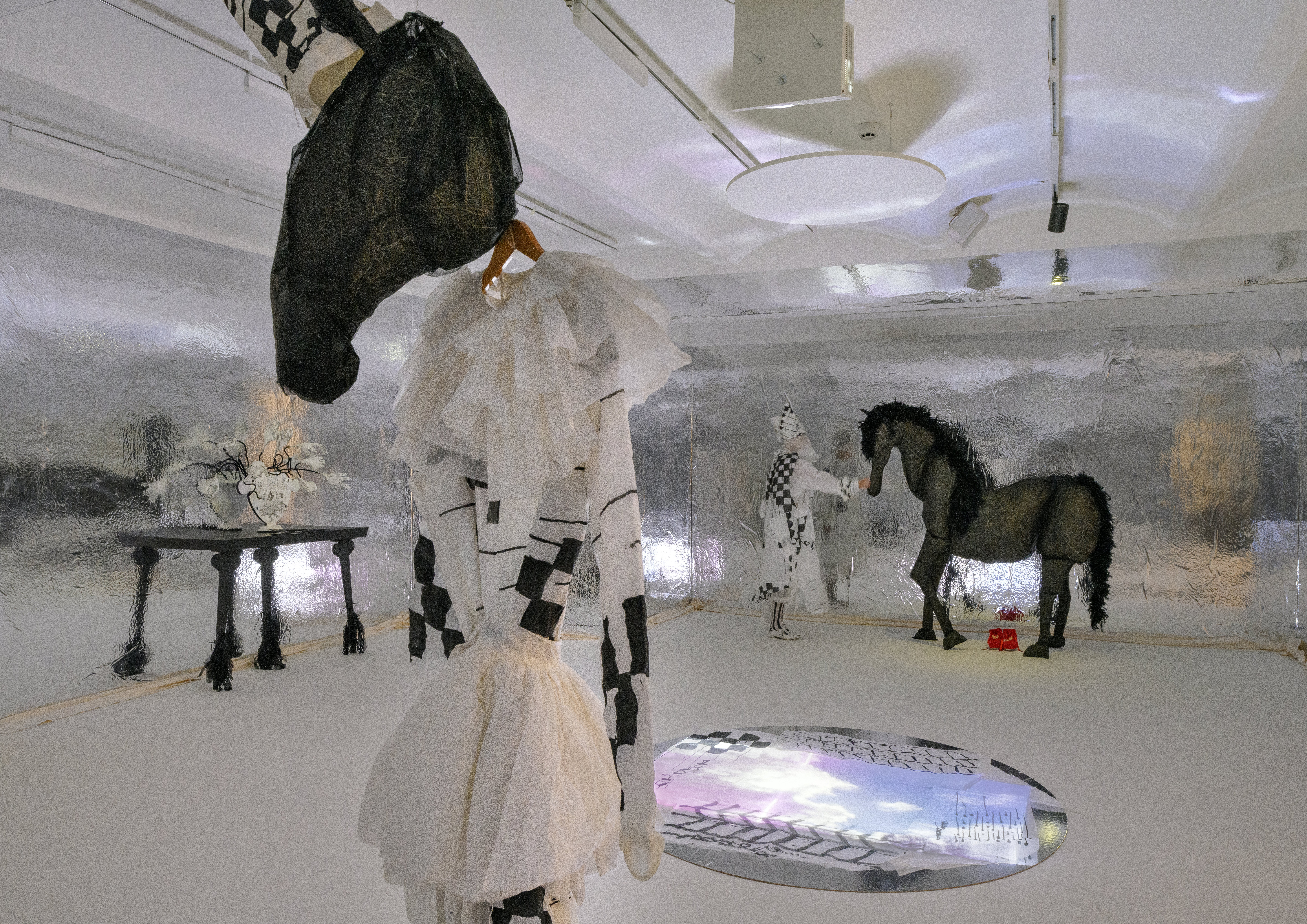Turner Prize 2024 review: A near total absence of guts, passion or edge
The circus-like sense of excitement around the country’s biggest contemporary art prize has drained away, and this year’s uninspiring shortlist won’t help

What happened to the Turner Prize? What was once seen as Britain’s most controversial art award couldn’t sustain itself forever on the tabloid-fuelled outrage of its Nineties peak period. Yet the organisers’ attempts to keep the event relevant in the face of dwindling public interest have only succeeded in kicking it ever further into the doldrums. After 2022, which seemed almost a return to form with Veronica Ryan crowned winner, and 2023 when it seemed to mark time, the Turner Prize returns in its 40th year with an exhibition notable for its near total absence of guts, passion or edge.
The four contenders hail from diverse backgrounds – Filippino, Glasgow Sikh, Roma and Black British – which they explore in very different ways. Yet the surge in identity politics has made matters of personal cultural heritage well-trodden territory in art. Indeed it’s given rise to a reductive rhetoric of curatorial buzz phrases, often focussing on issues of colonialism and cultural restitution, that some of the artists are only too happy to reiterate like eager students out to impress some unseen professor.
Manila-born Pio Abad follows a now very familiar strategy, the reinterpreted collection. For the exhibition at Oxford’s Ashmolean Museum for which he’s been nominated he scoured the institution’s vaults in search of artefacts that would illuminate the undeniably painful colonial history of his native Philippines. While he did dig out some interesting bits and pieces, from prints to weapons, they’re presented less in a spirit of excoriating historical revelation than as opportunities to trot out po-faced banalities about “syncretic solidarities” and “less than savoury histories of extraction”. A collection of stolen sacred knives from the embattled northern Philippines remains precisely that; the fact that it’s displayed on fabric woven during bombing in a recent US-backed conflict notwithstanding.
Abad has a feel for a quirky backstory: a pair of bronze tiaras suspended in space relate to crowns worn by the murdered royal family of Russia, which ended up at Blenheim Palace to be modelled by the wife of the then Duke of Marlborough, before being sold off to Imelda Marcos, wife of the Filipino dictator Fernand Marcos – hence Abad’s interest. Yet this remains a piece of intriguing, but rarefied cultural name-dropping that does nothing to illuminate Abad’s blank and passionless sculpture.
Brought up in Glasgow’s Sikh community, Jasleen Kaur casts her net closer to home. Her Sociomobile, a vintage Ford Escort draped in a giant doyley, has been the most talked about work in the build up to the show – 2024’s dead shark or unmade bed, if you like. But in today’s art climate you’ve got to do something a lot more provocative than displaying a mere car plus a bit of cloth, pumping muffled music from within, to get any sort of reaction, let alone outrage.

While the wall texts describe her exhibition space as “making space for us akin to the vast devotional halls she grew up in”, it lacks even the faintest trace of the numinous. The fake Axminster carpet, no doubt faithfully replicating those in Sikh temples, is just a carpet, the suspended plastic ceiling with a faint blue-grey tinge, apparently evoking the sky over Pollokshields is barely noticeable, let alone transporting. Its surface is dotted with various cultural artefacts, all apparently with stories to tell: scarves, track-suit jackets with Sikh emblems and a ghetto blaster with cassettes and CDs by the great Sufi singer Nusrat Fateh Ali Khan, whose music throbs out of that Ford Escort. While it’s good to hear that Glasgow’s Sikhs and Muslims appreciate each other’s culture and even pray together, this remains simply an interesting fact, amplified in a photo of a religious festival that wouldn’t look out of place in National Geographic magazine. Without its wall texts with their vacuous rhetoric about “communities of resistance” and “dispelling myths around where solidarities lie” this exhibition would barely exist.

Rooted in her Roma background Delaine Le Bas’s exuberantly slap-dash paint-on-cloth installations give an initial – and pleasing – sense of escaping the dead hand of art world hype and tight-arsed verbiage, as a kind of outsider magic realism created in a semi-detached house in Worthing. Horse-headed clowns and naked women scamper across diaphanous curtains; mysterious masked female figures stand in tent-like structures like something you might encounter on the fringes of some grungy underground music festival. That faint whiff of scuzziness is, however, deceptive. Le Bas went to art school and hangs out with pop stars and fashionistas of the order of Jarvis Cocker and John Galliano just as much as horse traders and scrap metal dealers, according to her memoirs quoted on the What We Wore website. And why shouldn’t she? She’s not pretending to be something she isn’t. Yet while her faux-amateurish painting is enjoyable in small doses, it lacks the intensity of real outsider art, and is a little too actually amateurish to sustain over the two large rooms she’s given here.
Claudette Johnson, the oldest and best known of the shortlisted artists, at 65, is a veteran of the 1980s British Black Arts Movement. Her large-scale drawings and paintings of her family and friends set out to challenge the absence of images of Black people in our major art galleries. Yet for all her undeniable and often very seductive technical skill, her use of line, tone, texture and shape – the fundamentals of drawing, her principle medium – is surprisingly conventional. While the exhibition for which she’s nominated, at London’s Courtauld Gallery, contained earlier, more experimental drawings, the images here mostly fall in line with a rather old-fashioned idea, perhaps defiantly so, of what images of people are supposed to look like. For all the wall texts’ talk of her interrogating her subjects’ “public and private” selves, what we mostly get are affectionate, uncritical paintings of people she likes.

The exception, the work that stops you in your tracks, is the large oil and pastel painting Pieta – a term given to images of Mary holding the dead Christ – in which a man cradles a younger man, presumably his son, across his knees. This finely crafted and majestically grave work has something lacking in just about everything else in this exhibition: genuine, deep feeling.
As to a winner, only Johnson gives a sense of having worked ideas through over time, one that goes beyond the callowness of most of the work here. I’d name her with a slightly heavy heart as her stolid realism hardly represents British art at the current critical juncture. But unless they were to give it Le Bas in the kind of mad, quixotic gesture that would probably finish the Turner Prize for good, there really isn’t an alternative.
The Turner Prize 2024 exhibition is at Tate Britain from 25 Sept to 16 Feb 2025
Join our commenting forum
Join thought-provoking conversations, follow other Independent readers and see their replies
Comments
Bookmark popover
Removed from bookmarks